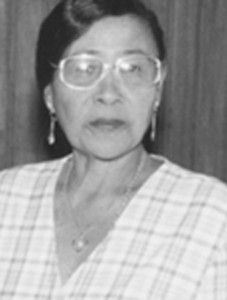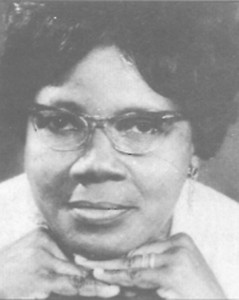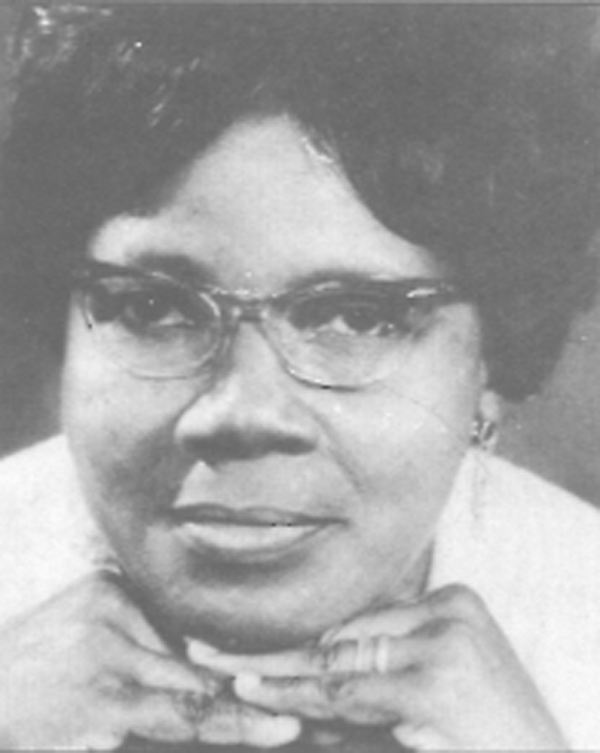Women in the Trade Unions: The Pre-Independence Period
Introduction
By independence in May 1966, there were some 62 registered worker unions in Guyana. Of this number approximately 26 could be regarded as leading Trade Unions. These included the first trade union, the British Guiana Labour Union (BGLU) registered in 1919 and the two umbrella unions, the British Guiana Trade Union Council (BGTUC) and the Federation of Unions of Government Employees (FUGE) registered in 1941 and 1951 respectively. However, it would have been as challenging to find women in the higher echelons of any union as the proverbial needle in a haystack. Though today the TUC has its first woman president, Ms. Gillian Burton, and along the way a very few women have occasionally breached the bastion of male dominance at the apex of the movement, women still have a minuscule presence, even in unions with majority female membership, in the areas where real power resides and important decisions are made.

The focus of this article will be to look briefly at the development of the labour/trade union movement and the status of women in it at independence.
The development of
the labour movement
In the early 1930’s the BGLU was the only union of any significance in the British Caribbean. However, by the end of the decade there were trade unions throughout the region. The BGLU was born out of the economic and social pressures of the 1880’s that boiled over into the first serious strike in 1905. That strike was started by the waterfront workers at Sandbach Parker and Co. Ltd., November 28, 1905. Hubert Nathaniel Critchlow emerged as one of the leaders of that strike. He gained experience from his involvement in that strike and others in that early period including his participation as a member of the labour delegation which in January 1917 negotiated with the Chamber of Commerce for a nine hour day, a 25% wage increase, overtime payment from 5pm onwards, Sundays and holidays. These experiences paved the way for the formation of the BGLU, January 11, 1919. After its formation, the next serious labour unrest in British Guiana, again started with strike action by the militant waterfront workers March 31, 1924. Critchlow and the BGLU were less successful in their demands on the workers’ behalf.

With the rest of the British Caribbean, the workers of British Guiana were involved in a series of strike action from 1934-1938. O. Nigel Boland (2001) stated that to a large extent the labour rebellions were a response to the economic distress of these depression years. The economic and the social pressures engendered by the Great Depression after 1929 had common and explosive consequences throughout the region, as sugar prices collapsed, unemployment and poverty increased, and immigrants returned home from overseas. In the aftermath of the strikes trade unions were established throughout the Caribbean. In January 1931, three years before the region-wide strikes had begun the second trade union was established in British Guiana.
The British Guiana Workers League (BGWL) was established by A. A. Thorne one of the leaders of the 1905 strike. It worked to organize workers on the sugar estates, in the Municipality, hospital and other government employees. Its registration was cancelled in 1951. Between October 1937 and November 1938, seven trade unions were registered and in 1939 another five were registered. Undoubtedly, the most important of them was the Man Power Citizens’ Association (MPCA) organised by Ayube Edun. It was registered November 5, 1937 and set about organizing sugar workers particularly field workers.
Women in the Trade
Union movement
The feminist author Vicky Randall (1987) in her work Women and Politics: An International Perspective, in assessing women’s political participation, widened the definition of politics into two broad categories – grass roots politics which includes among others voting and the franchise and Women’s Organisations. The second category is the political elites which include, among others, National Assemblies, the cabinet and trade unions.
These latter are so described because it is the leaders who hold the top positions in these organizations who wield real power and in whose hands political power is concentrated. Even though the trade union movement in Guyana began before the development of political parties, like elsewhere in the Caribbean, their fortunes seem interlinked. In fact trade unions are seen as an important second channel of political influence. Moreover, in the case of Guyana several women acquired skills as trade unionists which assisted them when they participated in the other political elites.
Guyanese women have always been involved in militant trade union activity. Walter Rodney in his A History of the Guyanese Working People, 1881-1905 discussed the important role played by women in the 1905 riots. Ashton Chase in his work A History of Trade Unionism in Guyana 1900 to 1961 has also discussed the militancy of our women in several strikes. There is also the 1950 Women’s March by the women of the BGLU. Nonetheless, there has always been a severe paucity of women at the helm of these organizations. Ironically, in the early years, the union that made little lasting impact was the one which from its inception included women. According to Chase:
Mr. Thorne held the Presidency of the Workers’ League until his death. From its inception and for a long time thereafter women held the office of Secretary beginning with Ms. Hildred Britton who was later succeeded by Mrs. Beatrice Paul. Among the signatories to the application for registration of this Union were Dr. P. Wellesley Campbell (its first Treasurer), Rev. D. P. Talbot (Vice President) and Ms. Iris DeFreitas (later Brazao)
Many women who played leading roles in charitable and welfare organizations and later political parties were also eminent trade unionists. As early as 1935, under the tutelage of H. N. Critchlow, Joanna Harris became the first female president of the BGLU. In 1939, Mrs. Eleanor Sewdin became Vice President of the MPCA and in 1940 President. However, the recommendation of the 1939 Moyne Commission “that women should be appointed to all boards and local authorities and that they should be nominated to the legislature if no representation of women’s interest was secured by election” did not lead to a large number of women being placed on any boards.
The decade of the 1940’s was one of agitation especially among sugar workers and of rising political awareness especially among women. In1946, Mrs. Janet Jagan was one of the co-founders of the Political Affairs Committee which later became the Peoples’ Progressive Party. In that same year, she and Mrs. Winifred Gaskin organized the Women’s Political and Economic Organisation (WPEO). In 1947, she joined the British Guiana Clerks’ Association and became its Assistant Secretary.
However, it was in 1948 with the strike at Enmore and she and her husband’s championing of the cause of the striking workers that underscored her serious commitment to trade unionism. In 1951, she became a member of the BGLU and together with Critchlow unsuccessfully attempted to organize domestics. During the Interim Government, Gertrude Collins represented trade union interests in the Legislative Council. Jane Phillips-Gay as a member of the Women’s Progressive Organisation became General Secretary of the Guiana Industrial Workers Union. As a member of the Peoples’ National Congress, she was involved with the BGTUC.
In the six years prior to independence, several women continued to be active in the trade union movement. Olga Byrne served as President of the Guiana Teachers Union from 1961-1963.
Her leadership capabilities were rewarded with the presidency of the Caribbean Union of Teachers. Perhaps the most militant of the women involved in trade union activity during the period under review was Mrs. Philomena Sahoye-Shury. She became General Secretary of the Guiana Agricultural and General Workers Union in 1964 in the midst of its toe – to- toe battle with the MPCA for the right to represent the sugar workers. Her outspoken and forthright stance on the workers’ behalf earned her the pseudonym of “fireball”.
At first glance, women seem to have done quite well in the trade union movement, but a careful examination of the positions they held reveals that except for the brief stint of Joanna Harris and Eleanor Swedin as president of the BGLU and MPCA respectively and Olga Byrne’s presidency of the GTU, the positions the other women held cannot be regarded as one which gave them any significant decision making power. During the period under review over 95% of the presidents of all the unions were men.
The reasons for this are similar for both the pre and post independence period. That discussion and women in the trade union movement in the post independence period will be the subject of a future article.

